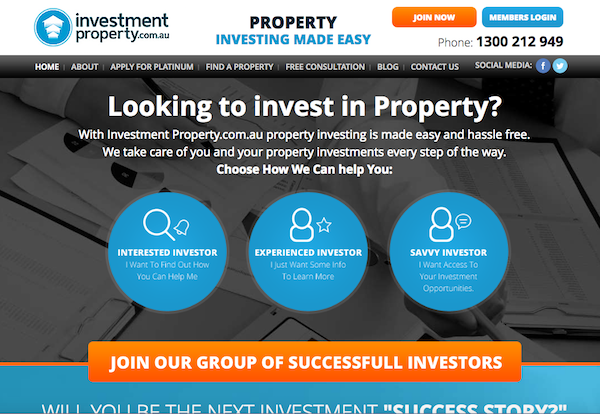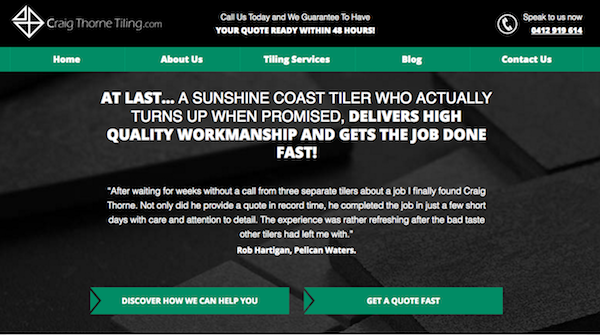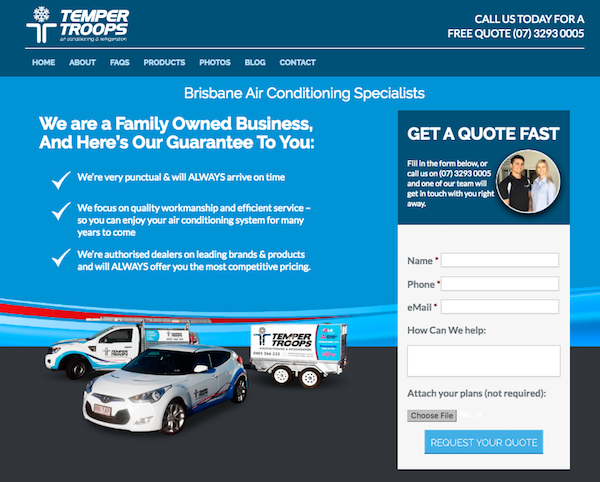The biggest threat to your SEO ROI isn't competition or algorithm changes—it's falling for shortcuts that seem cheaper but will destroy your investment.
Here's how to protect and maximise your SEO spend with insights from a website expert to get an unbiased perspective on maximising SEO ROI. What he revealed about AI content, algorithm changes, and something he calls the "marketer abuse cycle" will probably change how you approach your SEO investment.
I know it changed mine.
Check out this quote before going any further: "people who make the most money from SEO do two things exceptionally well: they identify strategies that deliver lasting results, and they squeeze every drop of potential from the traffic their rankings generate. But here's what most business owners don't realise—and I've seen this happen more times than I care to count—the landscape is changing rapidly. Those "quick wins" being promoted by many in the industry? They could actually tank your entire investment."
Well, you heard it here first.
12 ROI-Maximising Strategies That Stand the Test of Time
1. Get Your Offer Right
90% of businesses get this wrong. I've seen it over and over. Before worrying about traffic, ensure your website gives visitors exactly what they're searching for:
- Quote seekers: Prominent quote forms above the fold
- Information seekers: Clear "Learn More" buttons leading to detailed service pages
- Phone inquiries: Display numbers prominently (seems obvious, but...)
- Local visits: Include driving directions
- Purchases: Bold "BUY NOW" or "ORDER NOW" buttons
ROI Multiplier: Fixing this alone can double your conversion rates overnight, instantly doubling your SEO investment return. I've seen businesses ignore this completely while spending thousands on link building.



2. Capture and Multiply Local Traffic

Instead of competing for ultra-competitive terms, create what's called theme relevance around your location.
Example Strategy: If you're a Brisbane dentist, don't just target "Dentist in Brisbane." Create supporting content that is still relevant to your offering like:
- "Where to Avoid Eating in Brisbane if You're Concerned About Your Teeth"
- "Where to Buy Dental Products in Brisbane"
- "Is there Fluoride in Water in Brisbane?"
Why This Works: You're building an audience before they need your services. It's like laying groundwork.
3. Retarget Your SEO Traffic
Only 2% of visitors convert on their first visit. What about the other 98%? This is where most businesses leave money on the table.
Use retargeting to follow SEO visitors around the internet with your ads. Since they already searched for your services, they're qualified prospects worth additional investment.ROI Impact: Retargeting can increase overall conversion rates from SEO traffic by huge amounts, however, results vary quite a bit depending on your industry.
4. On-Page Retargeting for Content Traffic

Not all your SEO traffic is ready to buy immediately. Use on-page retargeting to redirect content visitors toward conversion opportunities:
- Offer free, valuable content (guides, checklists, consultations)
- Build curiosity with "Want to know how we achieved X?"
- Always provide genuine value, not sales pitches
This one is basically about meeting people where they are in their buying journey.
5. Strategic Email List Building

Critical insight: Focus on the sale first, list building second.
Google traffic is the hottest buying traffic available. Don't jeopardise sales by pushing newsletter signups when prospects want quotes or phone numbers. I think this is where a lot of people get confused about priorities.
Best Practice: Use email capture for content visitors and retargeting audiences, not primary SEO landing pages.
6. Website Push Notifications for Instant Traffic
Capture browser permissions for push notifications with irresistible offers:
- "Get notified about our next 50% OFF sale"
- "Alerts for new industry insights"
- "Exclusive member opportunities"
ROI Advantage: Instant access to qualified traffic for time-sensitive offers. Though I'll admit, these can be a bit annoying if overused.
7. Optimise Call-to-Actions Like Netflix
Study how Netflix creates urgency: "Join Free For A Month" with clear next steps. They've obviously spent millions testing this stuff.
Essential phrases for higher conversions:
- "Here's what to do next"
- "Your next step is..."
- "Call us now on [NUMBER]"
- "If you're ready to move forward, contact us here"
8. Turn Visitors Into Promoters
Simple but ignored strategy: Ask readers to share your content.
Build up the value you've provided, then make a direct request: "If this helped you, please share it with others who might benefit."
Perhaps it's because we're all afraid of seeming pushy, but most people don't ask for shares. And yet, it works.
9. Content Repurposing for Maximum Leverage

Transform one blog post into multiple traffic sources:
- YouTube videos: Record yourself discussing key points
- Google Drive documents: Upload PDF versions
- Audio content: Extract audio for SoundCloud, Spotify podcasts
- SlideShare presentations: Visual summaries
ROI Multiplier: One piece of content becomes 5-10 traffic sources. The math here is pretty compelling.
10. Mine Your "Almost Rankings" Gold
Check Google Analytics for keywords where you rank positions 11-20. These are ROI goldmines requiring minimal investment:
- Optimise existing content for these terms
- Add internal links from related pages
- Create supporting content to boost topical authority
Quick Win Potential: Moving from page 2 to page 1 can dramatically increase traffic. I've seen this happen in just a few weeks with the right tweaks.
11. Strategic Live Chat Implementation

Data-driven approach: Live chat works best for:
- Low to mid-ticket services
- Technical products needing quick answers
- Businesses with simple sign-up processes
Avoid for: High-ticket items where personal meetings are expected. We tested this extensively and the results were pretty clear-cut, though every business is different.
12. The Content Roadshow Strategy
Promote exceptional content to industry influencers via simple outreach:
"Hey, saw you shared [similar content] last week. I published something on [topic]—would love your thoughts."
Requirements for success:
- Content must be genuinely valuable
- Educational, not promotional
- Worth sharing with their audience
This approach feels a bit old-school, but it still works surprisingly well.
Advanced ROI Maximisation Strategies (What Top Performers Are Doing)
Now, here's where things get interesting. The companies achieving exceptional returns—I'm talking 5-10x ROI—aren't just using these basic strategies. They're implementing some pretty sophisticated tactics that most competitors haven't caught onto yet.
1. Advanced Attribution Modelling for Accurate ROI Measurement
The Problem: Standard analytics show attribution problems. Customers interact with multiple touchpoints before converting, making it challenging to assess SEO's true impact.
The Solution: Implement sophisticated attribution models:
Multi-Touch Attribution Models:
- Linear: Equal credit to all touchpoints (good for longer sales cycles)
- Time Decay: More credit to recent interactions
- U-Shaped: Heavy credit to first and last touchpoints
- Data-Driven: AI-powered attribution based on actual conversion patterns
Implementation: Use tools like HubSpot Attribution, Ruler Analytics, or Google Analytics 4's data-driven attribution to track the complete customer journey.
2. Programmatic SEO for Scalable ROI
What Top Performers Do: Instead of solely focusing on top-of-the-funnel keywords, they target high-intent keywords that indicate middle- and bottom-of-the-funnel searches.
The Strategy:
- Create templates for high-intent keywords like "[Competitor] Alternatives" or "[Product A] vs [Product B]"
- Target comparison keywords with lower competition but higher conversion intent
- Build content hubs organised by topic clusters
Example: Instead of competing for "CRM software" (highly competitive), target "Salesforce vs HubSpot" (easier to rank, higher intent).ROI Impact: These pages often convert 3-5x better than generic informational content because they target buyers actively comparing solutions. The logic is sound, though execution can be tricky.
3. AI-Powered SEO Optimisation
Dynamic Content Personalisation: AI tools can analyse user behaviour, preferences, and past interactions to generate content that adapts to individual users, improving dwell time, engagement, and conversion rates.
SEO Forecasting with AI:
- Use AI to predict traffic growth based on historical data
- Identify content gaps using competitor analysis
- Optimise for AI Overviews (appearing in 52% of searches)
ChatGPT Optimisation:
- Optimise content for conversational AI queries
- Focus on providing direct, structured answers
- Use schema markup for better AI understanding
I'll be honest, this area is moving so fast that some of these tactics might be outdated by the time you read this. But the principle of adapting to AI search behaviours seems solid.
4. Zero-Volume Keyword Goldmine
The Opportunity: Zero volume searches are an SEO goldmine, particularly if you're working with a low domain authority site.
How to Find Them:
- Mine Google's autocomplete and "People Also Ask" sections
- Analyse internal site search data
- Review customer support communications for common phrases
Why They Work: Less competition, highly specific intent, and easier ranking opportunities for newer sites. Sometimes the best opportunities are hiding in plain sight.
5. Multi-Platform SEO Strategy
Beyond Google Optimisation: Modern SEO requires optimisation across multiple search platforms, which honestly feels overwhelming at times:
Social Media SEO:
- TikTok and Instagram for short-form video content
- LinkedIn for B2B content discovery
- Reddit for community-driven search (growing rapidly)
Voice Search Optimisation:
- Target natural language, conversational keywords
- Optimise for local "near me" searches
- Create FAQ-style content for voice queries
Video SEO:
- YouTube optimisation (second largest search engine)
- Video schema markup for Google results
- Optimise video titles, descriptions, and transcripts
6. Advanced Link Building with E-E-A-T Focus
Quality Over Quantity Approach: Google's March 2024 Helpful Content Update emphasised rewarding genuine value, making traditional guest posting on low-value sites ineffective.
Journalist Keyword Strategy: Target terms that journalists search for to build backlinks at scale. Create data-driven studies, industry reports, and newsworthy content.
E-E-A-T Optimisation:
- Experience: Showcase first-hand experience with products/services
- Expertise: Demonstrate deep knowledge through comprehensive content
- Authoritativeness: Build recognition as an industry authority
- Trustworthiness: Include citations, author credentials, and contact information
This E-E-A-T stuff might seem like Google jargon, but it's actually pretty fundamental to building trust online.
Future-Proofing Your SEO Investment
Based on our expert's insights, here's how to protect your ROI long-term:
Avoid the AI Trap
"If it gets abused like it already is constantly and it just keeps going further, AI probably won't have a really valuable place in SEO because Google will just not pay attention to any of it."
Action: Invest in original, expert-created content that provides unique value and perspectives. No shortcuts.
Prioritise Adaptability Over Automation
"If you wanna stay on the edge of it and obviously you wanna shift as quickly as you can when algorithms and things have updates, that's where [AI] will probably have a little bit of a hard time keeping up with someone that's good at SEO."
Action: Work with agencies or specialists who monitor algorithm changes and adapt strategies quickly. The human element still matters.
Focus on Sustainable Strategies
Avoid any tactic that seems "too good to be true" or is being heavily promoted as a quick fix. History shows these get penalised. I know it's tempting to look for magic bullets, but they don't exist.
The AI Content Trap: Why "Cheap" Content Will Cost You Everything
The expert's warning was pretty stark, actually. He said: "AI has the potential to probably be the best case of [marketer abuse] that we've ever seen. Google I think has so far changed their stance on AI three or four times. Generally it's been a step backwards or more negative each time."
Here's the harsh reality about AI content and your SEO ROI, and I'll be honest—this stuff is a bit scary when you really think about it:
AI can only learn from existing content online. As our expert explains: "It's only gonna be as good as what everyone else has already put out there for articles and SEO and information... It's not going to have the ability to shift when the algorithm changes like a good agency or a good SEO strategist will."
ROI Impact: While AI content might seem cheaper upfront, you're essentially paying for recycled information that Google's algorithms are getting better at identifying and penalising. It's like buying counterfeit goods—looks fine initially, but...
This is the part that really shocked me. The expert said: "Whatever sites we're using, mostly or all AI generated content, it just tanked, killed the domains."
This isn't just a ranking drop—entire websites are being eliminated from search results. Think about that for a second. Imagine losing your entire SEO investment overnight because you chose the "cheaper" AI content route. I mean, that's not just a bad ROI, that's complete destruction of value.
What History Teaches Us About ROI Protection
Our expert identified a pattern that I think affects every SEO investment, and it's something I'd never really considered before:
"Every new tool that comes out, every new tool that we get as something that works or anytime we figure out something that works and it becomes common knowledge, marketers will just abuse it... Google will then notice that, they'll start penalising for it."
This makes sense when you think about it. Every marketing breakthrough gets overused.
Protecting Your Investment from the Cycle
The key to maximising ROI is avoiding strategies that are being overused. Instead, focus on these proven approaches—though I should mention, some of these might seem obvious, but you'd be surprised how many businesses get them wrong.
TLDR: Your Advanced ROI Action Plan
Immediate (This Week):
- Audit your main landing pages using Strategy #1 criteria
- Set up advanced attribution tracking in GA4
- Review Google Analytics for "almost ranking" opportunities
- Identify zero-volume keyword opportunities from internal search data
Short-term (This Month):
5. Implement multi-touch attribution modelling
6. Create comparison content targeting high-intent keywords
7. Perform content personalisation
8. Optimise for Google AI Overviews and ChatGPT
Long-term (Next Quarter):
9. Build programmatic SEO templates for scalable content
10. Develop cross-platform SEO strategy (social, voice, video)
11. Create data-driven studies for journalist outreach
12. Implement predictive SEO forecasting system
The Bottom Line
The businesses seeing 5-10x returns on their SEO spend aren't just using traditional tactics—they're implementing advanced attribution modelling, programmatic content strategies, and multi-platform optimisation that most competitors haven't adopted yet.
The difference between good ROI and exceptional ROI lies in these advanced strategies. Companies achieving 1,000%+ returns use sophisticated attribution models to track every touchpoint, content personalisation, and cross-platform SEO approaches that capture traffic from social media, voice search, and AI chat interfaces.
As our expert warned about the AI content trap destroying investments, the winners are those who adapt quickly to new opportunities while avoiding the pitfalls that tank entire domains. The choice isn't just between shortcuts and sustainability—it's between basic optimisation and advanced, data-driven strategies that compound returns over time.

